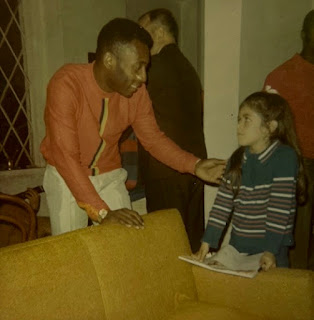On the fatigue (not the treachery) of images (series: notes to myself)
A pipe and its identity. A naked man, sitting on an uncomfortable rock. Another naked man, whose hand God seems desperate to reach. Another man, also naked, watching you, arms and legs spread like a gigantic X. Still another man, this time dressed, turned, watching a foggy landscape. And now many men, dressed like it’s a toga party, all together in an impossible meeting of fine minds. Just one more, of invisible people, probably men, probably dressed, on tiny boats, being crushed by a gigantic wave. The list goes on. Famous images, which even a few, clumsy words cannot fail to sketch, recalling them in anyone's mind. These images, and the countless others that have been cheaped by the digital revolution of high resolution and copyright-free downloads, are tired.
Not tired of being themselves. Of course not. For they are proud of their lineage, of the depth of their meaningfulness, of the richness of their cultural references, of the thickness of their historical relations. No. They have history, they are history.
No. They are tired of being abused, misused, and overused, like invisible slaves, to embellish and illustrate, decorate and communicate, powerpoint and keynote, this and that, a business presentation, a conference paper, a report, a glossy brochure, a videocall, a meme, a short introduction, a lengthy dissertation, a talk, some homework, an essay, a chapter, the cover of a book...
They are tired of not being respected, of being servants to trite remarks, poor thoughts, pedestrian ideas, pseudosmart scholarship. They are like the Trojan Women, noble, enslaved, forced to please brute masters and their shallow semantic purposes. They cannot bear their destiny of graphic means, cut and pasted to satisfy meaningless ends.
If they could speak, you would hear them crying of commercial exploitation and shallow popularisation, of unbearable juxtapositions and lack of imagination. Their fatigue is visible, their toil unfair, their embarrassment for their fall painful to watch.
They confess their sad predicament to the Trojan Horse, to Scylla and Charybdis, to the Madeleines, regurgitated so many times...
Next time you witness such visual violence do not approve, do not acquiesce. Remind the thoughtless torturers that there is nothing intellectually cleverish or culturally sophisticatoid in using a classic image to cover their lack of intelligence and a tasteless penchant for cliches.
These images and countless others are humanity’s semantic capital, they should not be wasted to garnish trivialities. Leave them alone, or treat them with the respect they deserve.






Comments
Post a Comment